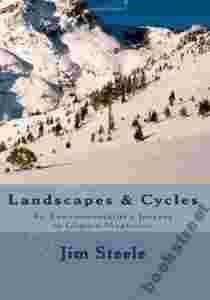|
For 25 years, as director of San Francisco State
University’s Sierra Nevada Field Campus, Jim Steele has
opened the eyes and ears of countless students to the
magic of California’s Sierra Nevada. His first book,
Landscapes and Cycles, An Environmentalist’s Journey to
Climate Skepticism will likewise open your minds. It
compares the effects of landscape changes, natural
cycles and climate change on polar bears, whales,
walruses, penguins, frogs, pika, butterflies and marine
ecosystems. Although it is wise to think globally, all
wildlife reacts locally and all regions of the earth
have been behaving very differently from what a globally
averaged statistic might suggest. Despite media horror
stories, many species have benefitted from recent
climate change. Those species that are struggling have
invariably been affected by issues other than climate
change and require very different remedies. Controlling
our carbon footprints will never address the most
pressing issues of habitat loss and watershed
degradation. Landscapes and Cycles juxtaposes
environmental optimism and with concern. It celebrates
the work of conservationists and scientists whose
tireless efforts have enabled the full recovery of a
great many species. On the other hand it presents
withering criticism against the politicization of
climate change and those who have hijacked key
environmental issues to the detriment of good
environmental stewardship. Steele highlights how faulty
science and bad models have misguided critical
conservation efforts and misrepresented conservation
success. Most distressing Landscapes and Cycles reveals
how global warming advocates have opposed appropriate
conservation efforts simply because the concerned
scientists did not blame climate change. Landscapes and
Cycles demystifies both climate science and conservation
science in a manner easily understood by everyone. In
easily grasped terms Steele explains how natural cycles
can cause abrupt climate change and extreme weather
events and how those events affect wildlife. If we want
to be good stewards of the environment, understanding
those natural cycles are essential. Landscapes and
Cycles outlines how we can build a more resilient
environment and provides a much-needed perspective from
which we can better separate sincere concerns from the
overzealous catastrophic predictions that dominate the
media. Landscapes and Cycles highlights what we need to
look for during the next 10 years in order to determine
if the “control knob” of global climate change is
natural cycles or the rising concentration of carbon
dioxide. Until then Steele argues now more than ever, we
need to have more transparent and respectful debates to
move the science forward. Landscapes and Cycles will
enlighten anyone concerned with climate change and the
fate of endangered species. Not only is it fascinating
reading for the general public, it should required
reading for every high school and college environmental
studies class.
|
|

